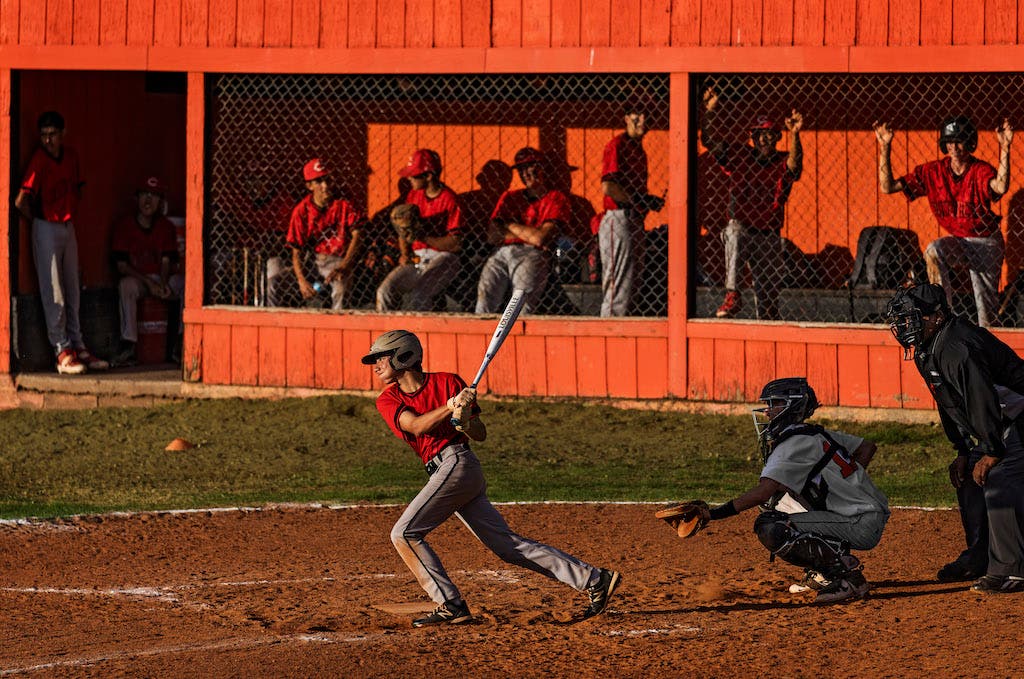Grassroots baseball is sport in its purist form. It is where the game’s innocence lives and where excellence begins. It’s where baseball is embraced at its fundamental level, not only by the young people who play it but the families and friends who attend the games. It’s about the volunteers who are a part of the ballpark fabric, announcers and groundskeepers, kids in the snack shacks, scorekeepers, and the moms who keep the pitch counts. Their dedication unites communities and allows the game to flourish. Baseball can thrive anywhere: sandlots or streets, fields or parks, backyards or across the world. I strive to encapsulate this in my baseball photos.
Grassroots Baseball photos
My first book, Grassroots Baseball: Where Legends Begin, was released in 2019. It includes baseball photos from all levels of the amateur game in the U.S. and hotbeds around the world. Each chapter opens with a portrait of a baseball legend and a first-person account of his early memories playing the game. Hall of Famers including Hank Aaron, Johnny Bench, Vladimir Guerrero, and Cal Ripken, Jr., as well as retired superstar Ichiro Suzuki, lent their voices to accompany my images to tell stories of their towns and countries.
I am now working on a second book. The photographs that make up this book will celebrate and illuminate grassroots baseball in the small towns and large cities that connect historic Route 66 in the U.S. Starting in the mid-19th century, the amateur game was part of the fabric of the country. When the first federal highway connecting the Midwest to Southern California opened in 1926, baseball had already become the vehicle of dreams. This artery of America stretched from the shores of Lake Michigan — home to the Chicago Cubs — to the shores of the Pacific Ocean where the Coast League’s Los Angeles Angels played.
My Lens of Choice
My workhorse for this project is the Sony 70-200 2.8 lens. When I shoot the Major League Baseball, my go-to is the 400 2.8. Documenting the grassroots game is much different than shooting a professional game. Baseball looks different in different places. I am much more interested in a sense of place for my grassroots baseball photos. Geography, topography, stadiums, and sandlots provide my framing. Capturing the action is still part of grassroots baseball, but these images need to show the environment, tell the story, and ideally, display the culture.
The 70-200 2.8 combined with the Sony A1 body is a powerful combination for getting the job done. It allows me tremendous flexibility. The 70-200 range allows me to shoot from any position. Setting up at 200mm, f/2.8 creates great foreground and background separation. Its speed allows me to instantly capture the action. When shooting night games, the f2.8 aperture is a must in low-light conditions which is the case on most amateur fields along Route 66.
Capturing the Pre-Game
Pre-game images are also an important part of my storytelling. Portraits, details and scene-setters can all be mastered with this one lens. Because I shoot from several locations, the image stabilization feature allows me to handhold without worrying about shake. Now that the A1 has become my main body, the combination is even more powerful.
We are taught as photographers to crop in the camera. This is still true, but how I crop has changed due to this feature. I can keep my scenes wider to show a sense of place. But I know later, if I decide I want a tighter crop, I can crop in with no issues because of the large file sizes. Scale is an important part of creating a book. This lens allows me to get what I need — tight on details and loose for tableaus. The lens is great for pregame portraits, which have been an important element of my books.

The topography and climate conditions throughout the eight states differ widely. The lush greenery of Illinois is a different take than the flatlands of Texas. This image from Williams, Arizona captures the late afternoon light that you find in the northern part of that state. I was enamored by the orange glow that is prevalent there.






